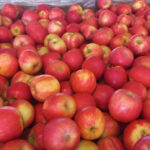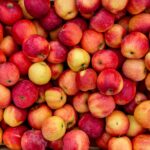New Zealand apple exports to exceed NZ$700M in 2016

"I keep saying to people that we're doing really well now, and they shouldn’t be surprised - this is the end result of a number of years of very good decision-making, good investment and it’s all coming to fruition now."
These comments from Pipfruit New Zealand CEO Alan Pollard were made during Fruit Logistica in Berlin, just moments before his compatriots at Turners & Growers officially announced the opening of a Bangkok office, where in addition to kiwifruit sales with Zespri the company would also be marketing apples in Southeast Asia.
In conversation with www.freshfruitportal.com, Pollard and the group's business development manager Gary Jones discussed how the country's apple sector had witnessed higher productivity than expected this year with new plantings coming into production.
"It's going to be about 5.5% up for export volumes on last year, which is about 10% up on what we anticipated a few months ago," Pollard said.
"Something like a million trees that went in last year and it’ll be the same again this year going in, which are going to come into production in three to four years’ time.
"In terms of industry value now, last year we had NZ$630-640 million (US$419-425 million) so this year we’re anticipating we'll probably exceed NZ$700 million (US$465 million) – that’s over a 100% increase on four years’ ago. The growth trajectory is exponential and in our view it’s sustainable growth as well."
Jones added what made this uptick even more significant was the fact this was supposed to be an 'off year', given the alternate bearing nature of apple trees.
"It’s the first time since 2008 that we’ve had an upswing in what is supposed to be an off year, which means next year is going to be a massive crop," Jones said.
When asked how the organization could be so bullish on high prices despite such a large volume rise, Jones pointed to the importance of proprietary varieties and high demand in Asia.
"The price point for any unit of measure is about 50% higher now than it was four years ago. It's driven a bit on volume but it’s mainly driven on price, which is a clear indicator that demand has gotten away from supply for New Zealand apples," he said.
"There are a lot of proprietary varieties which have a significant proportion of the crop now and are commanding some pretty big premiums, particularly in Asia.
"The growers are returning very good money and that allows them to reinvest in their business, planting more varieties which are proprietary, focusing on specific markets and customs," he said, adding a depreciated New Zealand dollar had also played in the sector's favor.
Pollard shared figures that showed just how much the sector's focus had shifted from Western to Eastern markets.
"Last year over 40% of our export volume went to Asia, up from 33% the year before so it’s a noticeable shift," he said.
"Asia still has growing economies, notwithstanding the concerns around China which we don’t believe will impact demand for us, and you’ve got the shift from low to middle class - they've got high disposable income.
"They want really high quality, fresh and safe fruit, and we’ve just hit the sweet spot."
Concerns about economic deceleration in China have caused concern for many agricultural exporters around the world, but neither Pollard or Jones appeared to pay too much mind to the issue, citing internal market aspects that don't necessarily show up in GDP figures.
"There are two economies in China – there’s a move to a service-based economy where all the growth is and will continue to be, and then you've obviously got the rust belt, the production and commodity sectors which are falling away," Jones said.
"You've got the service sectors which are in the cities and have the customers we’re targeting, where if anything they’re growing much quicker.
"We don’t see any slow-off in demand; in fact it’s likely to continue to grow significantly."
Pollard said New Zealand's apple sector was targeting a very specific "high niche premium market".
"That's where there’s very strong demand outstripping supply, where our varieties are very well targeted and that’s where the price points are very strong. We just don’t see that changing," he said.
"Everyone is desperate for a bad story about China, and I just think they’re manufacturing, struggling and scrambling to try and find negativity. So there are just good opportunities there because there is very good fundamental growth where our customer base is," Jones added.
Pollard emphasized New Zealand was still a small player with just 0.5% of the world's apple production, but there was still room for growth and breaking in new markets - Australia, India, Japan and South Korea are the prime examples.
"If we can crack those markets and find ways to get in over the next four to five years, that will set us up for another round of growth," Pollard said.
"There are a number of rounds of negotiations going on for other agreements which potentially could create an opportunity for us, so we’re certainly working towards phytosanitary access and what we need to do in the event that we do get trade access.
"In terms of tariff reduction, Japan is the key market for us that offers that opportunity, because in a number of other markets we don’t have tariffs going into them, but there are some of the other aspects like standardization of phytosanitary rules which potentially has some benefit for us."
Jones said cutting apple tariffs had been left off the table in the New Zealand-South Korea free trade agreement, but clarified Australia was in the same boat in its deal with the East Asian country.
















































